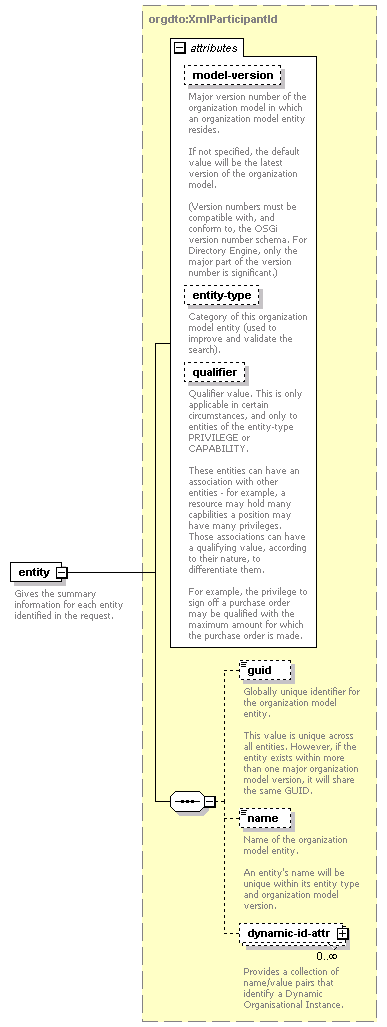| diagram |  |
||
| namespace | http://resolver.api.de.n2.tibco.com | ||
| properties |
|
||
| children | entity | ||
| annotation |
|
||
| source | <xs:element name="getEntityNameResponse"> <xs:annotation> <xs:documentation>**PRIVATE API - Reserved for internal use**</xs:documentation> </xs:annotation> <xs:complexType> <xs:annotation> <xs:documentation>Returns the name(s) of the entities identified by the given model version and guid.</xs:documentation> </xs:annotation> <xs:sequence minOccurs="0" maxOccurs="unbounded"> <xs:element name="entity" type="orgdto:XmlParticipantId"> <xs:annotation> <xs:documentation>Gives the summary information for each entity identified in the request.</xs:documentation> </xs:annotation> </xs:element> </xs:sequence> </xs:complexType> </xs:element> |
element getEntityNameResponse/entity
| diagram |  |
||||||||||||||||||||||||||||||
| type | XmlParticipantId | ||||||||||||||||||||||||||||||
| properties |
|
||||||||||||||||||||||||||||||
| children | guid name dynamic-id-attr | ||||||||||||||||||||||||||||||
| attributes |
|
||||||||||||||||||||||||||||||
| annotation |
|
||||||||||||||||||||||||||||||
| source | <xs:element name="entity" type="orgdto:XmlParticipantId"> <xs:annotation> <xs:documentation>Gives the summary information for each entity identified in the request.</xs:documentation> </xs:annotation> </xs:element> |
XML Schema documentation generated by XMLSpy Schema Editor http://www.altova.com/xmlspy